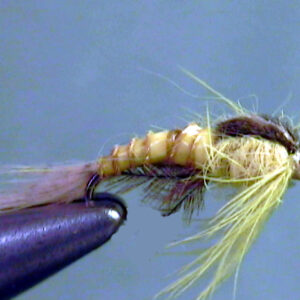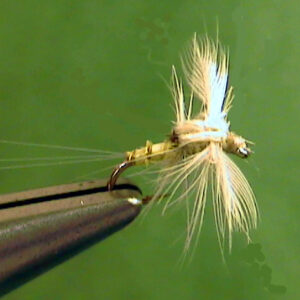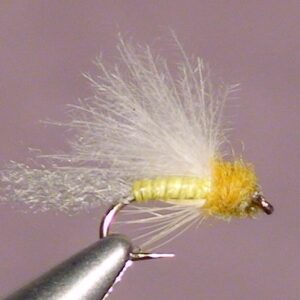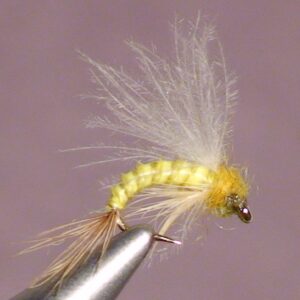Hook Size: 16/18
conditions permit the little mayflies to dry their wings relatively fast, so they
usually don’t stay on the water very long. They hatch in calm to moderately slow
flowing water. You want find them hatching in the fast water areas of a stream.
As mentioned in the emerger sections, the water is often smooth or slick.
These duns usually hatch from mid afternoon to the later part of the afternoon.
The hatch can last a rather long time, as long as a couple of hours. If it’s a
cloudy day, the hatch can last even longer.
The trout will move from their normal moderate flow sections of the stream to the
nearest slower moving water to hatch. In pocket water streams where these
mayflies exist, you want to fish the calm water pockets and relatively shallow
water of the pools. In this situation, by the time the dun’s wings are dry enough to
fly, they sometimes get caught up in the moderate or faster flowing water. Most of
the time they are able to depart the water from the slow sections of water they
hatch in.
Dun Presentation:
Fish the “Perfect Fly” Sulphur Dun in the slower moving, smooth water where the
Sulphurs hatch. An upstream presentation is okay provided you can get the fly
to the trout without spooking them.
In smooth water situations, the upstream type of presentation often ends up
spooking more trout than you catch. In these situations, you should approach
individual fish that are rising using a down and across presentation. A light, long
leader and tippet is usually required. We recommend leaders from ten to twelve
feet in length and of size 5X to 7X.
If you are fishing streams with complex currents, you should allow plenty of slack
in the tippet to help prevent drag. Sometimes mending the line can spook the
trout. Slack line and pile cast are necessary in some cases. You must get the fly
to the trout without alerting them of your presence.
Slack line cast such as reach cast, pile cast and curve cast are necessary in
many cases. You must get the fly to the trout without them seeing you.




